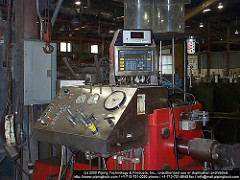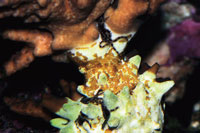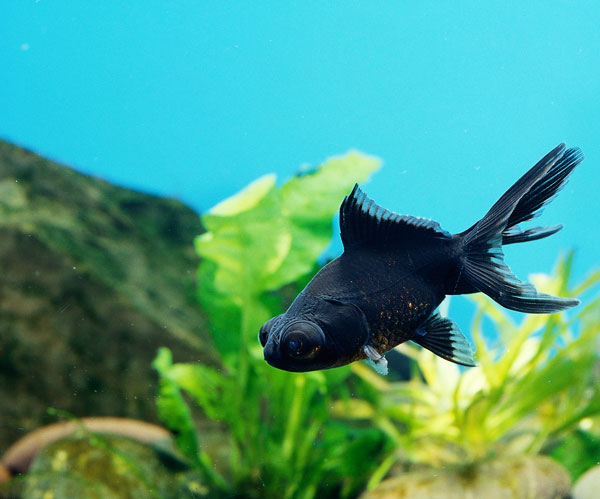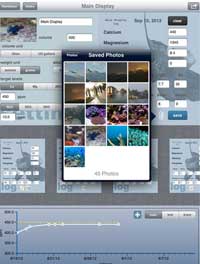
Q. We built a 6,000-gallon pond a few years ago. The pond is well-planted and we keep about a dozen koi. This is a liner pond. We circulate and filter the pond water with a 1,600-gallon-per-hour sump pump that sits at the deep end of the pond. The outflow hose from the pump runs along the pond floor, up the side (underneath some rocks) and then to the top of a waterfall.
Our problem is that the sump pump is always clogging with leaves and other debris. We have to clean out that pump every day to keep the water flowing. Changing the size of the filter screen does not seem to matter. What can we do to reduce the maintenance?
A. This is a common problem in well-landscaped backyard ponds with very-high-flow-rate submersible pumping systems. The suction from the pump is so great that it draws in debris from across the pond floor, quickly clogging the works.
A partial solution is to manually clear the pond floor using a swimming pool leaf-raking net on a long extension pole to remove as much of the leaves and other material as possible. This probably needs to be done only a few times in the early spring and late fall. This procedure will undoubtedly cloud the water with all kinds of temporarily suspended matter. So it might also be a good time to do a 30-percent or greater pond water change. Pump out the cloudy pond water first, then refill. The koi will not mind the temporary mess.
You might also think about installing a higher capacity in-pond mechanical filter screen for your pump. There are many ways to do this, so let me suggest a simple and inexpensive version, and you can improvise. Purchase a plastic hamper with grilled sides at any department store. Place some large stones in the bottom and submerge the hamper in your backyard pond. Now place the submersible pump inside the hamper, resting on the stones. That's it.
This approach has two drawbacks. First, a plastic hamper sitting in your backyard pond will be a less-than-attractive feature, so you may want to think about ways to hide or disguise it. For example, live aquatic plants (such as water lilies or water hyacinths, or a tall stand of cattails) and ceramic water features can be used as a screen.
Second, extensive removal of the leaf litter and debris sitting on the pond floor will destroy much of the backyard pond's natural value for aquatic invertebrates. Dragonfly larvae, caddisfly larvae, a host of beetles, snails, and tons of other near-microscopic critters live down there and are very beneficial to pond ecology. Not the least of which is the fact that they are food for small pond fish.
An alternative, then, is to move the entire pumping system outside the backyard pond to an external basin. Although it does represent a bit more work than my earlier suggestion, the maintenance and operation benefits are substantial, as are the aesthetics.
The external basin can be any size — from a standard 32-gallon rubber trash pail to a 150-gallon PVC horse trough, or even larger. It should be situated within a few feet of the backyard pond and sunk into the ground so that the top of the basin is just an inch or so above the water level of the backyard pond.
If you are worried about jeopardizing the integrity of the pond liner, the basin can be connected hydraulically to the backyard pond by a large (in your case, 3-inch) siphon tube make from PVC pipe. This definitely works, but it is awkward and unsightly (again, there are ingenious methods for hiding the siphon pipe with aquatic plants, etc.).
Alternatively, you can connect the pond and basin with an underground pipe. You will need a special liner fitting to connect the pipe, and a bulkhead fitting to put through the basin wall. If you cannot find a 3-inch fitting you can use four 1½-inch pipes to get the same basic volume and flow. I would pierce the backyard pond wall at mid-level, not at the bottom. You do not want to disturb the floor too much.
Now place your hamper/pump inside the basin and you are set to go. Turning on the pump draws water into the basin, where accompanying leaves and other debris are trapped. Occasional cleaning involves nothing more than shutting off the pump, removing the hamper/pump and scooping out the gunk.
 Would You Like The Supreme Fishing Experience? Heres The Reason Why It Is Essential To Carry The Mo
If what youre seeking out is considerably more fish thr
Would You Like The Supreme Fishing Experience? Heres The Reason Why It Is Essential To Carry The Mo
If what youre seeking out is considerably more fish thr
 Cleaner Wrasse
Cleaner Wrasse
 Coral and Invertebrate Quarantine Procedures
Coral and Invertebrate Quarantine Procedures
 Fish and Fungus
Black Moor Q. I have two large black moor goldfish, one larg
Fish and Fungus
Black Moor Q. I have two large black moor goldfish, one larg
 Reefdoser Pro for iPad Ships
Reefdoser Pro for iPad Ships
Copyright © 2005-2016 Pet Information All Rights Reserved
Contact us: www162date@outlook.com